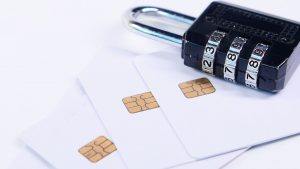PayPal is one of the first choices for many eCommerce businesses and merchants to handle online payments.
Paypal accounts are meant to have their data encryption and built-in prevention tools tightly secured as the Fort Knox of virtual security. But the accounts of millions of users fall victim to fraud because of popular checkout options thanks to Paypal’s low friction and ease of use.
In order to hinder or prevent things like chargeback frauds, merchants who regularly transact over PayPal should be aware of these four common tricks.
What types of Paypal Fraud are there?
 There are several more common ways scammers and fraudsters want to get into your virtual pocket in Paypal. Most of them include using cunning and slick tricks as you’ll find below.
There are several more common ways scammers and fraudsters want to get into your virtual pocket in Paypal. Most of them include using cunning and slick tricks as you’ll find below.
Fake Email Addresses
The most common way of fraud is done by scammers who send forged emails to their victims that appear to be from PayPal. These fake emails state that the scammer paid money into the seller’s account and that PayPal has placed a hold on the funds and will not release them until the seller sends a shipment tracking number.
One must be aware that Paypal does not hold funds in escrow.
The scammer is hoping that the seller will rush to ship the item and send over a tracking number in order to receive the money. Once the item has been shipped, it’s too late—the scammer will get an item that they never paid for, and the seller will eventually realize that PayPal was never holding money from them.
Email Phishing
Sending sellers an email that appears to be from PayPal indicates that funds have been transferred into their account pending confirmation, with a link or button for the seller to click that will make the money available to them.
The link leads to a fake PayPal site that will ask for the seller’s login credentials.
If the seller enters their email and password into the fake site, the scammer will be able to use them to log into the seller’s actual PayPal account, from which they can make payments or withdraw funds. In order to prevent these, you need a fraud prevention solution that can help you dictate suspicious user activities.
False Shipping Address
After a purchase is made and the payment has been placed in the seller’s PayPal account, the scammer asks the seller to ship their purchased item to an invalid delivery address.
After several failed delivery attempts, the shipping company flags the item as undeliverable in their system. The scammer then contacts the shipping company and gives them a new, valid shipping address.
When the scammer gets their shipment, they file a complaint with PayPal claiming that the item was never delivered. The seller has no proof of delivery because their transaction detail shows only the original, invalid address.
PayPal’s Seller Protection doesn’t cover shipments made to addresses that aren’t on file, so the seller loses both the item they shipped and the payment funds.
Overpayment and Chargeback
If you’re seeking assistance with chargeback disputes, consider exploring reputable platforms that compare and evaluate various options, like the ones discussed in this insightful analysis of the best chargeback companies.
Sometimes, a scammer may make a payment to a seller’s PayPal account that exceeds the cost of the item they are purchasing.
Then they will contact the seller, explain that they overpaid, and ask for the remaining balance to be paid and charged back to them.
After the seller sends back the overpayment amount, the scammer sends a complaint to PayPal claiming that their account was compromised and that they never meant to send a payment to the seller in the first place.
PayPal reimburses the full original payment back to the scammer. Even if the seller hasn’t shipped out the purchased item yet, they’ve still lost the “overpaid” amount they sent back. This is basically a reverse chargeback.
How to Prevent Paypal Fraud?

Now let’s have a look at several ways to prevent them from happening.
Fraud detection is used in many industries such as banking, online gambling, eCommerce, or insurance. In banking, fraud may include forging checks or using stolen credit cards. Other forms include identity theft or impersonation causing an accident with the sole intent for a payout.
There are several actionable steps account users can take to prevent or detect them.
- The first suggestion is to go and sign up for PayPal’s Seller Protection Program. PayPal will monitor your transactions for signs of fraud.
- Block customers who file disputes or make fraud claims like demanding chargebacks. Fraudsters will often target the same seller several times if no action is taken.
- Requests to rush shipments, accept partial payments, or accept payments split up between multiple PayPal accounts are all strong indicators of fraudulent activity. Make sure you look out for these
- Items that have a high resale value or are in high demand are especially attractive to fraudsters. Before shipping out especially valuable items, double-check shipping and billing addresses to make sure they match.
- Even customers with valid credentials may commit “friendly fraud” out of ignorance or impatience. When shipping high-value items, insist on signature confirmation on delivery.
Conclusion
If you know what to look for, you can exercise caution and protect yourself from scammers, thieves, and hackers. The biggest threat here is that most cases of fraud happen because merchants have a hard time seeing warning signs.
